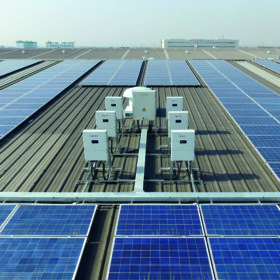UK regulator approves five undersea energy links by 2032
The UK electricity regulator has approved five new undersea energy links to connect the United Kingdom with the Netherlands, Belgium, Germany, Ireland, and between Northern Ireland and Scotland by 2032. Three will serve as traditional interconnectors, while two will also transmit power from offshore wind farms.
Transforming electric bus depots into solar energy hubs
An international research team has used data on Beijing’s public transit system to explore if bus depots could host solar installations and energy storage facilities to help reduce the load on the city’s grid. The researchers say they plan to generalize their proposed model to help other areas estimate possible return on investment of transforming other civic infrastructure into energy hubs.
Two-layer power trading mechanism to support distributed solar
Researchers in China have proposed a new hybrid transaction model for distributed power trading. The model encourages the participation of aggregators in market transactions for distributed resources and promotes the expansion of distributed energy storage.
Deye debuts new microinverter series
Chinese manufacturer Deye has launched a new microinverter series featuring three models, with PV input capacities ranging from 1,320 W to 2,200 W and output capacities between 600 W and 1,000 W.
Phnix presents new residential air-to-water heat pumps
The Chinese manufacturer said its new Heco series uses propane (R290) as a refrigerant and includes five models with a nominal capacity ranging from 6 kW to 17 kW.
What happens when malware hits PV systems
A random malware variant affected about 800 remote monitoring devices at ground-mounted PV plants in Japan in May 2024. Tokyo-based cybersecurity firm Girasol Energy has told pv magazine what happened and how PV asset owners can protect themselves against such incidents.
Controlling grid fluctuations via solar module cooling
A research group has proposed a novel method to control ramp rates in power networks. Its control optimization is based on weather, load and production forecast data. The scientists simulated the operation of the proposed technique and reached a ramp rate reduction of up to 76.2%.
Metrel launches electrical installation safety tester for PV systems
Metrel, a Slovenian measurement equipment supplier, says its new electrical installation safety tester can assess systems with a maximum voltage of up to 1,500 V and a maximum short circuit current of 40 A.
Greek researchers develop privacy-preserving PV forecasting technique
Researchers from Greece have developed a PV forecasting technique for prosumer schemes using federated learning, a machine learning method that sends local model updates to a central server for correction. Their simulations show surprising results compared to centralized forecasting.
Ultra-short-term PV power forecast based on dung beetle algorithm
Researchers have developed a novel deep-learning method to predict ultra-short-term PV power, using an optimization method that is based on the behavior of dung beetles. The proposed approach reportedly performed better than seven other conventional prediction methods over a 1-year period.










